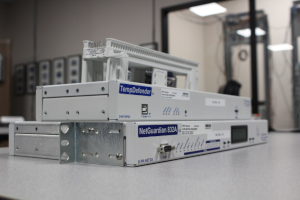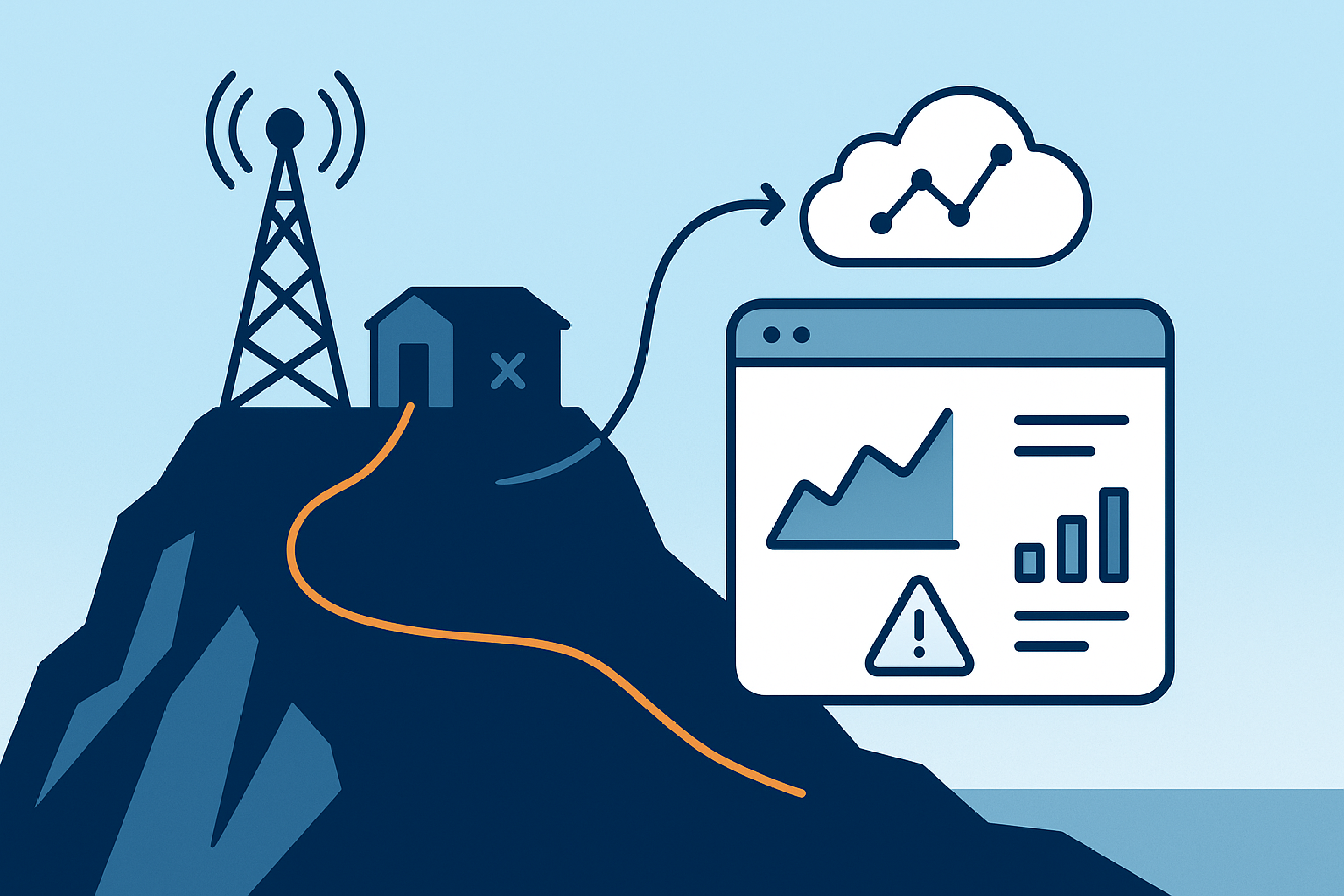Check out our White Paper Series!
A complete library of helpful advice and survival guides for every aspect of system monitoring and control.
1-800-693-0351
Have a specific question? Ask our team of expert engineers and get a specific answer!
Sign up for the next DPS Factory Training!

Whether you're new to our equipment or you've used it for years, DPS factory training is the best way to get more from your monitoring.
Reserve Your Seat TodayIt's not uncommon to have one lone remote site, left behind by a system upgrade. It's often still doing important work, like serving as a backup radio link for paging and P25 failover.
However, the visibility you once had at this site is gone. There's no more alarm dashboard or generator fuel status.
That's exactly the situation one of our clients found themselves in.
They had deployed a T/Mon MINI and NetGuardian 240T years ago - back when T1 lines were the norm. But as their network modernized and switched over to a P25-based system, most of those legacy sites were retired - except one.
That single site still had a NetGuardian 240T connected via T1, quietly protecting that one specific location. The catch, though, is that no monitoring data was being collected anymore. The T/Mon MINI was removed during a redesign of their monitoring system. And with no master to report to, that 240T became an island - fully connected but with nowhere to report alarm data.

It's a familiar story: A monitoring setup that worked fine ten years ago starts showing its age. Technology standards evolve. Transport methods shift. And even if the hardware's still alive, you can lose visibility just because the back-end system is no longer supported.
Things tends to go wrong when any of the following events happen:
You're left with a half-working system that technically "functions," but delivers none of the useful data you once relied on.
When monitoring stops, your risk skyrockets. Consider the hidden costs of operating with limited visibility (or none at all) at your remote site:
Monitoring isn't just a convenience. It's your early-warning system. Without it, you're gambling on the hope that nothing will go wrong.
But "hope" isn't a strategy.
In an ideal scenario, you're be able to reuse your existing equipment and get:
And if a retrofit isn't possible, you'll still want a modern "drop-in" replacement that:
That's exactly the kind of path we explored during a recent DPS web demo.
This client's NetGuardian 240T may still have some life left - if it can support secure e-mail alerts or be accessed via its web interface. But there's also a smarter long-term option: Upgrade to a new NetGuardian G6.
Upgrading to the G6 platform makes sense because:
Best of all, DPS offers trade-in credit for older units, like the 240T, to bring down your total upgrade cost. That's a minimal investment for restored visibility, modern security, and long-term reliability.
And here's a secret a lot of people don't realize: You don't need a T/Mon (or other master station) to monitor just one site. A single NetGuardian can stand alone - sending alerts via email. T/Mon (or a third-part SNMP manager) only becomes necessary when you want a unified dashboard for many sites.
During the demo, one key question came up: Can a DPS NetGuardian send SNMP traps to a third-party system?
The answer is yes - if the transport works.
Here's the architecture challenge:
Originally, this client used a T1-to-Ethernet converter to bridge the gap. That converter, though, is now obsolete. The missing piece isn't the NetGuardian or the third-party gear - it's the transport layer.
If the SNMP trap can get converted back to IP after being encapsulated over T1, this client could build a bridge between their legacy backup site and their current P25 network's centralized alarm view. And with the right combination of gear, that's a viable architecture.
This kind of mediation is what general-purpose RTUs are built to do.
While so far our discussion has focused on a single site, it's almost guaranteed that this isn't a one-off.
Organizations with complex telecom footprints often have:
Most of these sites aren't retired - they're just forgotten. That's dangerous.
A single NetGuardian, even without a master station, can restore visibility. And when you're ready to add centralized monitoring, it'll be fully compatible with SNMP managers or a T/Mon master.
This lets you fix things incrementally - without a massive overhaul.
If you haven't looked at RTUs in the last 10 years, you might be surprised at what they can do now.
Here's a quick checklist of what you should expect from a modern unit like the NetGuardian G6:
If your existing monitoring gear doesn't offer this, it's time to look at an upgrade - even if just for one site.
You've probably got a few sites like this one.
They still matter and they're still doing real work. But you can't see what's happening out there. That's more than just inconvenient - it's risky.
And it's totally unnecessary.
We specialize in helping people just like you modernize remote monitoring, whether that means retrofitting a single site or upgrading your entire network. We've done this for telcos, utilities, railroads, and government agencies across North America and beyond.
So if you're trying to get more life out of legacy gear - or you're ready to bring your visibility up to 2025 standards - we should talk.
If you're reading this, there's probably at least one site you're concerned about. Let's fix it - before it causes downtime.
Call us at 559-454-1600
Or email us at sales@dpstele.com
Tell us:
We'll walk you through your options. If you have a 240T or another older model, we can even apply trade-in credit toward a G6 upgrade.
Let's get your visibility back - one site at a time.

Andrew Erickson
Andrew Erickson is an Application Engineer at DPS Telecom, a manufacturer of semi-custom remote alarm monitoring systems based in Fresno, California. Andrew brings more than 18 years of experience building site monitoring solutions, developing intuitive user interfaces and documentation, and opt...